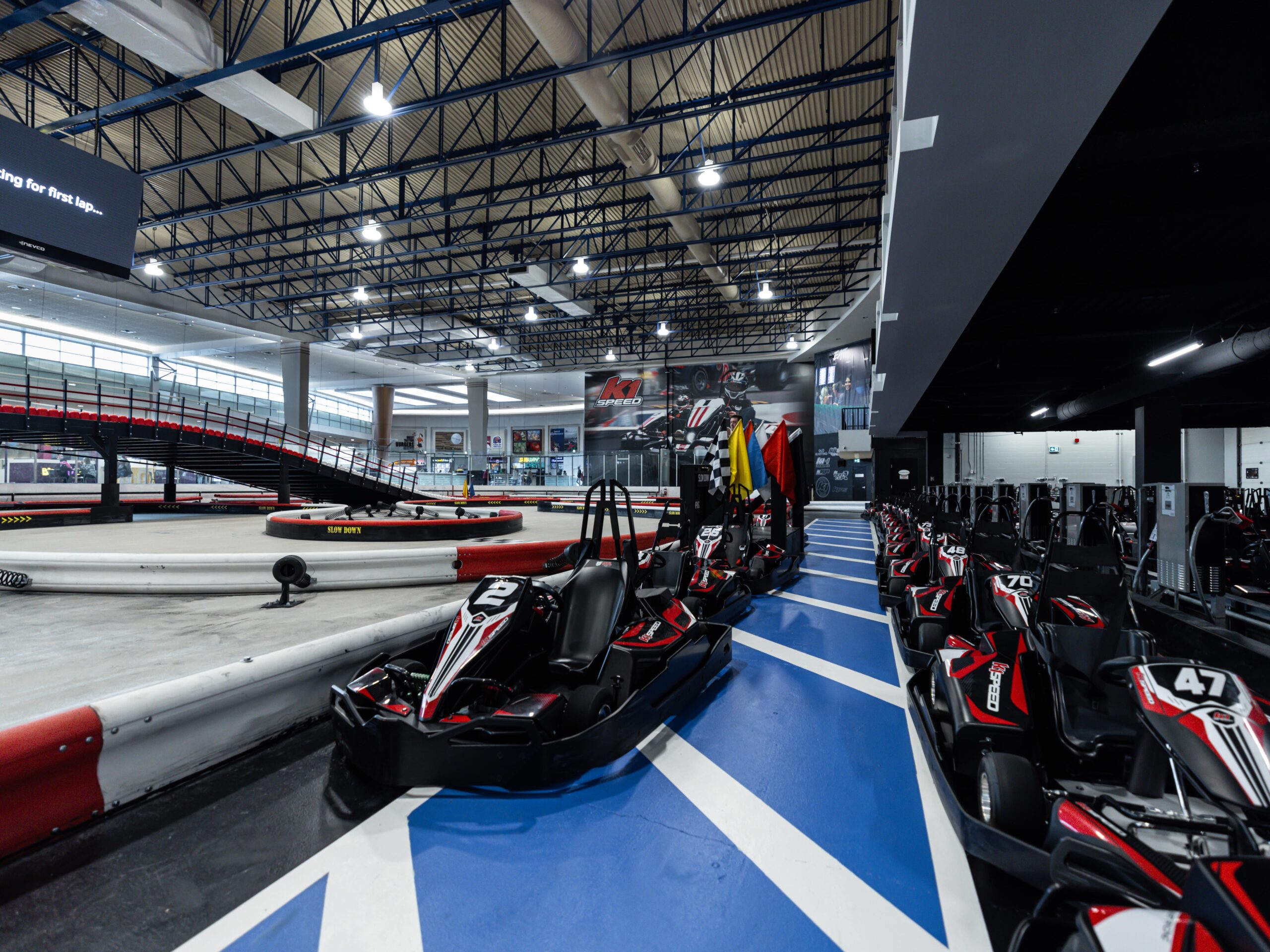The Evolution of Go-Kart Technology: From Gas to Electric
April 1, 2025

Remember the distinctive smell of gasoline and the roar of engines at go-kart tracks? Those days are changing fast! The world of go-karting has zoomed into a new era, trading gas fumes for clean electric power. At K1 Speed, we've been at the forefront of this exciting shift, bringing the future of karting to racing fans everywhere.
The Birth of Go-Karting: How It All Started
In the 1950s, the first go-karts were simple machines with lawnmower engines. These early karts helped create a new kind of racing that anyone could try. Art Ingels, a race car builder from California, created the first go-kart in 1956, sparking a revolution in accessible motorsports. Within a few years, companies started manufacturing karts commercially, and the sport exploded in popularity.
The early tracks were often parking lots or makeshift circuits but quickly evolved into dedicated racing facilities. Through the 1960s and 1970s, go-karting grew from a hobby into a serious sport, becoming the starting point for many professional racing careers. Famous drivers like Michael Schumacher, Lewis Hamilton, and Ayrton Senna all started their journeys in go-karts.
Gas-powered karts ruled the tracks for decades. They were fast and fun, giving drivers a taste of real racing action. These karts became more sophisticated, with better engines, improved safety features, and more reliable components.
But as time went on, some problems became clear. The maintenance requirements were intensive, indoor racing posed ventilation challenges, and the environmental impact became a growing concern.
Why Gas Karts Started Running Out of Steam
Traditional gas karts came with some real headaches:
- Engine noise levels that required hearing protection
- Exhaust fumes meant tracks needed special ventilation
- Frequent oil changes and engine repairs got expensive
- Dealing with fuel storage created safety concerns
- Environmental impact from emissions and fuel consumption
- Inconsistent performance as engine components wore down
Enter the Electric Revolution
Everything changed when electric go-karts hit the scene in the early 2000s and gained significant traction around the mid-to-late 2000s. This revolutionary shift marked a new chapter in karting history, significantly improving the racing experience and track operations.
K1 Speed saw the future and jumped in early, becoming one of the first to offer all-electric racing. Today, our tracks showcase how far electric karts have come.
The switch to electric brought remarkable advancements in multiple areas. Tracks became cleaner and more environmentally friendly with zero emissions. The new electric motors delivered smooth, powerful acceleration while requiring less maintenance than their gas counterparts.
Quick-charging systems eliminated downtime between races, allowing more drivers to enjoy the track throughout the day. Perhaps most importantly, electric technology enabled precise control over kart performance and safety features, making the sport more accessible and safe to drivers of all ages and skill levels.
The Technology Behind Modern Electric Go-Karts
Modern electric go-karts offer a perfect blend of simplicity and performance. Their straightforward design focuses on delivering a reliable and exciting racing experience without unnecessary complexity. The electric motor provides consistent power delivery, making these karts both fun to drive and easy to maintain.
Unlike gas-powered karts that can lose power as fuel levels decrease, electric karts maintain steady performance throughout each session with swappable batteries. Their simple yet effective speed control systems ensure safe operation for drivers of different experience levels. Basic timing systems track lap times accurately, letting racers measure their improvement from one session to the next.
The beauty of electric karts lies in their simplicity. With fewer moving parts than traditional gas karts, they're more reliable and require less maintenance. This means more time spent racing and less time spent on repairs. Their consistent performance and straightforward operation make them perfect for newcomers and experienced racers.
Racing Into Tomorrow: The Future of Karting
The go-karting industry continues to evolve, and the future holds fascinating possibilities. Emerging technologies could transform the racing experience in ways we're only beginning to imagine.
Artificial Intelligence could revolutionize how we learn to race. Imagine AI systems that analyze driving patterns in real-time, offering personalized feedback and tips for improvement. These systems might even adjust track difficulty dynamically, ensuring every driver faces just the right level of challenge.
Energy management technology continues to advance rapidly. Future electric karts might feature ultra-efficient battery systems with extended range and minimal charging time. Smart energy distribution systems could help drivers maximize their performance, automatically optimizing power usage throughout the race.
Ready to Race Into the Future?
At K1 Speed, we're proud to be part of go-karting's electric revolution. Our indoor tracks offer year-round racing excitement for everyone, from first-timers to seasoned pros. Whether planning a birthday party or corporate event or just wanting to feel the thrill of electric racing, we make every event unforgettable.
Join us at K1 Speed and discover why electric go-karting isn't just the future – it's the exciting present of motorsports entertainment!
Visit Your Nearest K1 Speed Location
BLOG | CONTACT | FAQs | RULES | CAREERS | BOOK ONLINE | GIFT CARDS
© K1 SPEED, INC. ALL RIGHTS RESERVED | PRIVACY POLICY | TERMS AND CONDITIONS
© K1 SPEED, INC. ALL RIGHTS RESERVED
